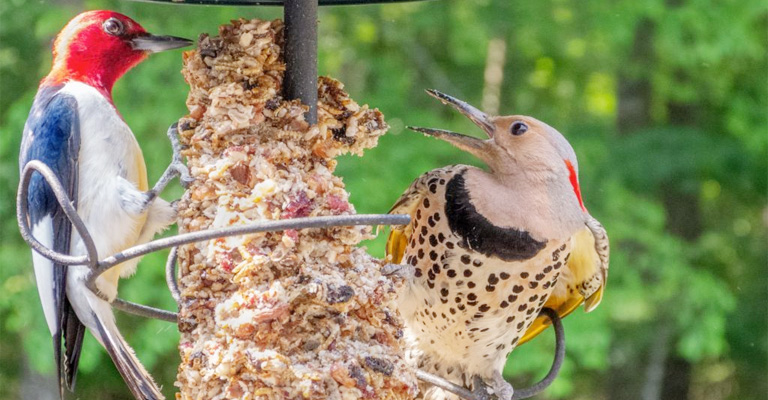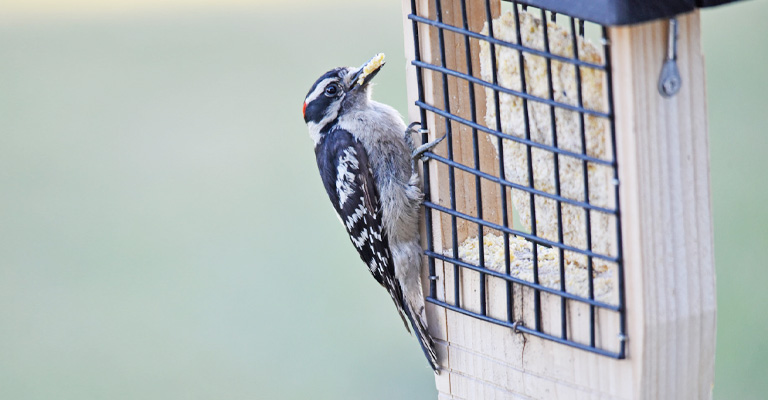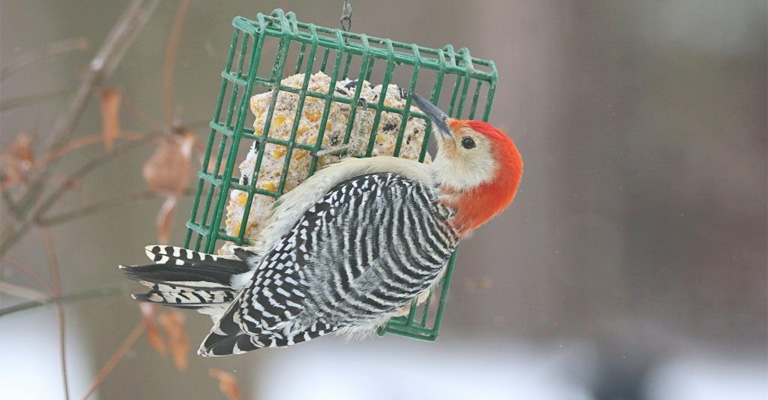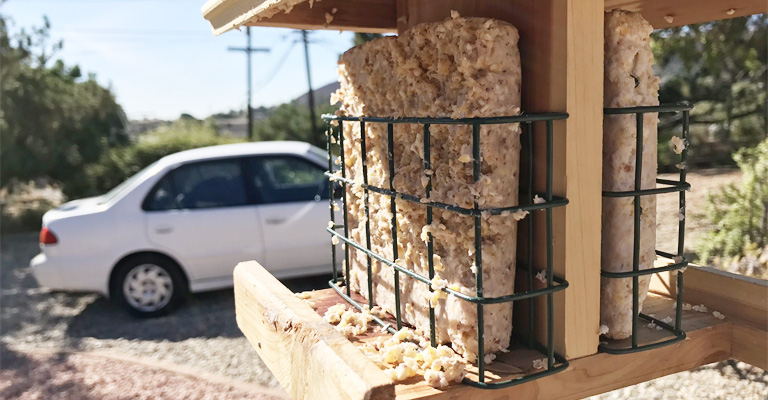Perhaps, you already know how popular suet is for birds. Hang them on a branch tree and flocks of birds would fight over it, especially the woodpeckers, nuthatches, chickadees, jays, and starlings.
Bird enthusiasts like you know how to bring the birds to your backyard with suet. This fatty little treat can be exceptionally effective in drawing beautiful birds to your corridor.
However, despite all the efforts, birds sometimes may not eat the suet you offer. What happened? Why birds are not eating your suet? Different reasons can follow.
Today, we will explore the reasons behind why a bird may not eat your suet given the fact that it’s perfect. Let’s figure out.

Key Points:
- Suet is made of animal fat from beef or mutton. It is a high-energy treat for the birds.
- Especially during the winter, birds like woodpeckers and chickadees would love to have suet with their daily meal to stay warm.
- Earlier, suet was used to make candles, particularly in medieval Europe. The high fat made it a remarkable source of fire.
- It’s not for birds only. Suet can significantly attract other wildlife like squirrels, raccoons, and even bears.
- You can also create homemade bird feeders using suet, details are below.
- Suet is not for winter only. You can offer it throughout the year. Summer suet often includes fruits and insects to attract different birds.
- It’s a natural insulator for birds due to its high melting point and slow decomposition rate.
- You can also add insects or larvae in the suet recipe to specifically attract carnivorous birds like warblers and nuthatches.
Despite all the special ingredients and high energy value of suet, birds may deny a suet. Why’s that? We will find out soon. Keep reading to find out.
Why Birds Are Not Eating Your Suet?
Different reasons can follow for this denial. Put simply, it’s up to you how you put the suet and where. Check the details below.
1) Birds Can’t Find Suet

Birds may have a hard time finding suet. Most birds aren’t that intelligent and it may take 7 days to weeks for them to find a new feeder.
Or, perhaps you have put the suet somewhere where it’s not easily accessible or discoverable by birds. In addition to that, are you sure birds in your area are suet eaters?
For instance, hummingbirds, orioles, and tanagers don’t eat suet and they are naturally fruit eaters. Learn more about how to deal with a bully hummingbird.
Ensure you want to attract the suet-eating birds only. Also, you should place the suet feeders somewhere safe from predators like wild cats or coyotes.
In addition to that, birds appreciate a cover. You can use trees or shrubs nearby. Also, it is wise not to hang the suet feeders near windows or grounds that reflect. It can often startle the birds and drive them away.
2) Suet’s Getting Bad

To your surprise or not, suet can go bad. They are purely organic with an expiry date. You shouldn’t keep the suet for more than two weeks in the feeders.
To prevent such wastage, cut the suet cake or chunk into pieces and offer only a few amounts that birds can eat in a day or two. You can refrigerate the unused suet and bring it out when it’s needed.
Additionally, keep in mind that, suet quality would deteriorate in high-temperature and have a spoiled taste. Is the temperature around your area above 70 degrees? If yes, that might not be a good time to feed the suet.
Along with quality, the suet texture would also become sticky above 70 degrees. There’s a high possibility that it would stick to birds’ feathers. This would trouble them in flight. Gooey feathers can also be life-threatening at some point.
Use a thermometer to measure temperature in your area. It is best to serve suet in colder months when there is no risk of spoiling it. However, you can still offer suet during summer, but with proper guidance.
Place the suet below a shady and cool area where the temperature is comparatively lower. Also, monitor the quality of suet at the start of the day.
Ensure you are offering a nicely preserved solid suet for the birds. They would love the smell and enjoy the fresh cake.
Here are two of the primary reasons why birds are not eating your suet and how you may prevent it.
You can find suet in your nearest bird store or simply make some on your own. The next part of our article describes how you can make a suet.
Suet Recipe: How to Make One?

The primary ingredient of suet is animal fat. Beef and mutton would do the best. But some people can also use pork fat, which is fine too.
In addition to fat, you will also need elements to add to the suet. This is where you define what kind of suet you are making. Some birds prefer fat with added fruits in it.
For other insect-eater birds, you should add different insects such as mealworms and larvae as supplementary. You should also add a cup of seeds. Sunflower seed would be a good candidate.
The proportion should be, 1:1 = 1 Cup of Animat Fat: 1 Cup of Seed. Insects and fruits are optional and should be added as to how you prefer them.
** Note: Raw animal fats are available in local shop stores. You can also buy from online.
Here are a few steps on how to make a suet
- Melt the fat but not too much. Just make sure it’s liquid.
- When it’s liquid, add the bird seeds into it and stir it slowly.
- You will eventually have a thick and gummy solution.
- Optionally, add dried fruits, nuts, or insects into it to enhance the taste.
- Stir it too and pour the liquid solution into the mold to create the cake.
I have used a few recycled cups to mold the suet and it worked perfectly fine for me. Some people prefer silicon molds which can be brought online and that’s fine too.
Let it cool and freeze. You can put the mold container in the refrigerator if you like. That would speed up the process.
And you are done! Get a clean container and hang the suet cake in your garden or backyard!
Last Words
Congratulations! Now, you know why birds are not eating your suet. You can now solve it and replace the suet with new ones, making sure it doesn’t happen again.
Also, remember to attract the right birds to the right place. It is an essential tip to get things right. Let us know in the comment section, what were the challenges you were facing with your suet. We would be glad to help.
Also, share our article with others and help them draw the birds too. We will come back soon with another article. Stay with us.